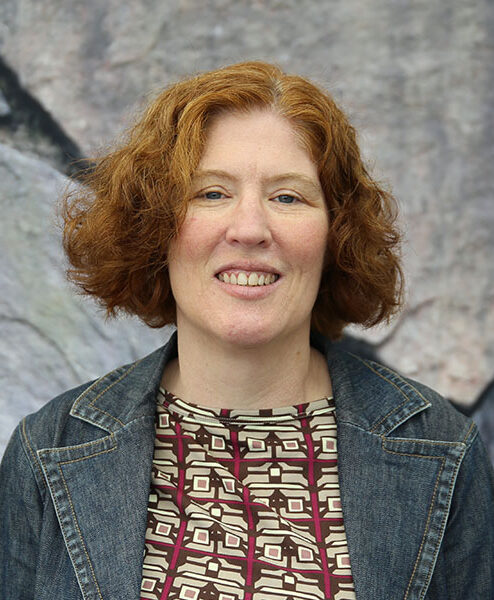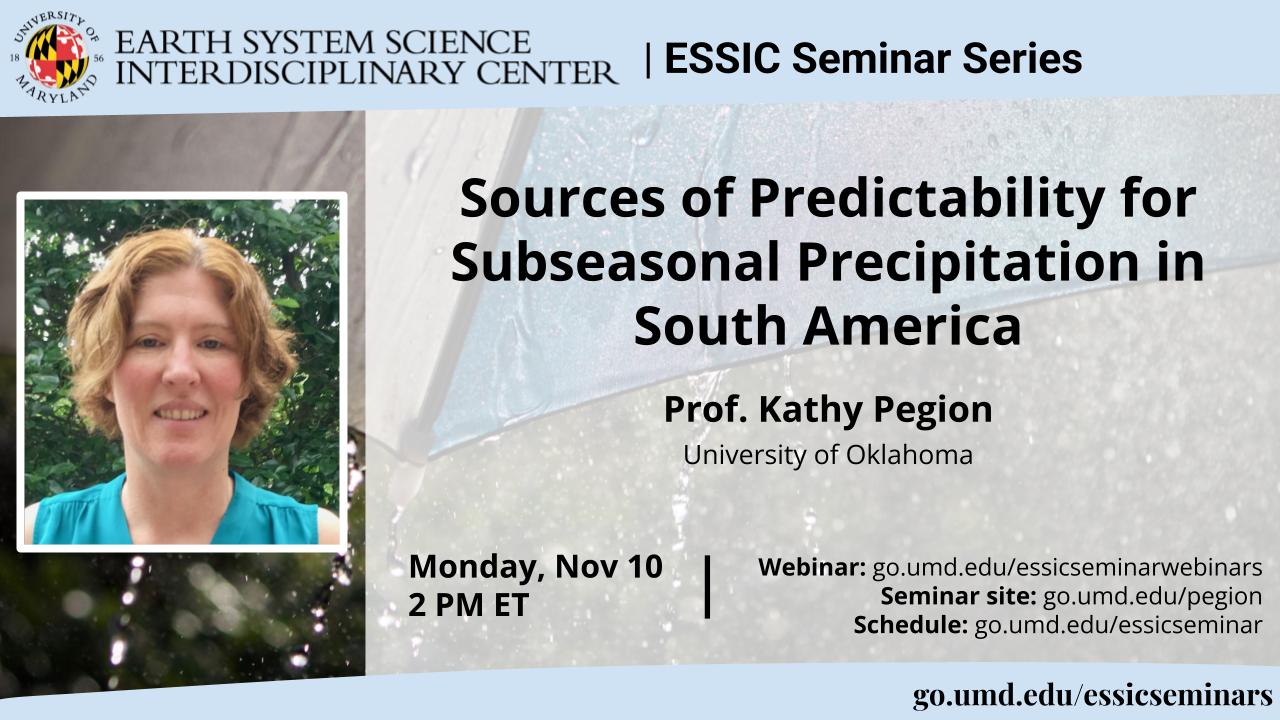
Sources of Predictability for Subseasonal Precipitation in South America
Prof. Kathy Pegion
University of Oklahoma
Monday November 10, 2025, 2 PM ET
Abstract:
Most global land regions have little to no significant average subseasonal skill for precipitation. However, parts of South America, particularly Brazil, have modest but significant skill in most subseasonal prediction models. The skill indicates that predictability exists and the source of the skill represents a source predictability. We investigate where this skill is coming from to better understand subseasonal precipitation predictability in South America.
Using subseasonal re-forecasts from the NCAR-CESM2 model, we demonstrate that significant skill persists even when interannual variability is removed. The highest skill occurs during austral summer and spring. To isolate sources of predictability, we analyze a novel set of re-forecast experiments initialized with climatological atmosphere, land and ocean states. Results indicate that atmospheric initial conditions are essential for achieving skill, while ocean initializations contribute to skill containing interannual variability and land initializations contribute minimally to skill.
Canonical correlation analysis is used to identify the most skillful spatial patterns and associated time series during the high-skill seasons. The most skillful patterns in December–February contain additional skill beyond the South American dipole – the dominant pattern of precipitation variability. This additional skill is not associated with propagating tropical convection or sea surface temperature anomalies indicating that the Madden–Julian Oscillation (MJO), El Niño– Southern Oscillation (ENSO), or South Atlantic SST variability are not the sources of predictability.
Instead, a wave-train-like structure extends across the South Pacific, resembling a Rossby wave response. Idealized experiments using a simplified atmospheric general circulation model show that this pattern can be reproduced by stationary tropical heating over the Maritime Continent, suggesting a dynamical link between tropical heating and South American precipitation variability on subseasonal timescales independent of ENSO and the MJO.
Biosketch:
Dr. Kathy Pegion is an Associate Professor and Williams Chair in Earth System Prediction at the University of Oklahoma. She earned her Ph.D. in Climate Dynamics from George Mason University. She leads the Earth System Prediction Lab (ESPLab), which focuses on subseasonal-to-seasonal (S2S) predictability—identifying sources and limits of forecast skill on weeks-to-months timescales and applying predictions to benefit society. Her team uses physical- dynamical models, explainable AI, and advanced statistics. As lead of the Subseasonal Consortium (SubC), she collaborates across agencies and institutions to improve extended-range forecasting. Current ESPLab projects address food and water security, transportation, and extremes.
Webinar:
Event site: https://go.umd.edu/pegion
Zoom Webinar: https://go.umd.edu/essicseminarwebinars
Zoom Meeting ID: 918 7733 3086
Zoom password: essic
US Toll: +13017158592
Global call-in numbers: https://umd.zoom.us/u/aMElEpvNu
For IT assistance:
Cazzy Medley: cazzy@umd.edu
Resources:
Seminar schedule & archive: https://go.umd.edu/essicseminar
Seminar Google calendar: https://go.umd.edu/essicseminarcalendar
Seminar recordings on Youtube: https://www.youtube.com/user/ESSICUMD

